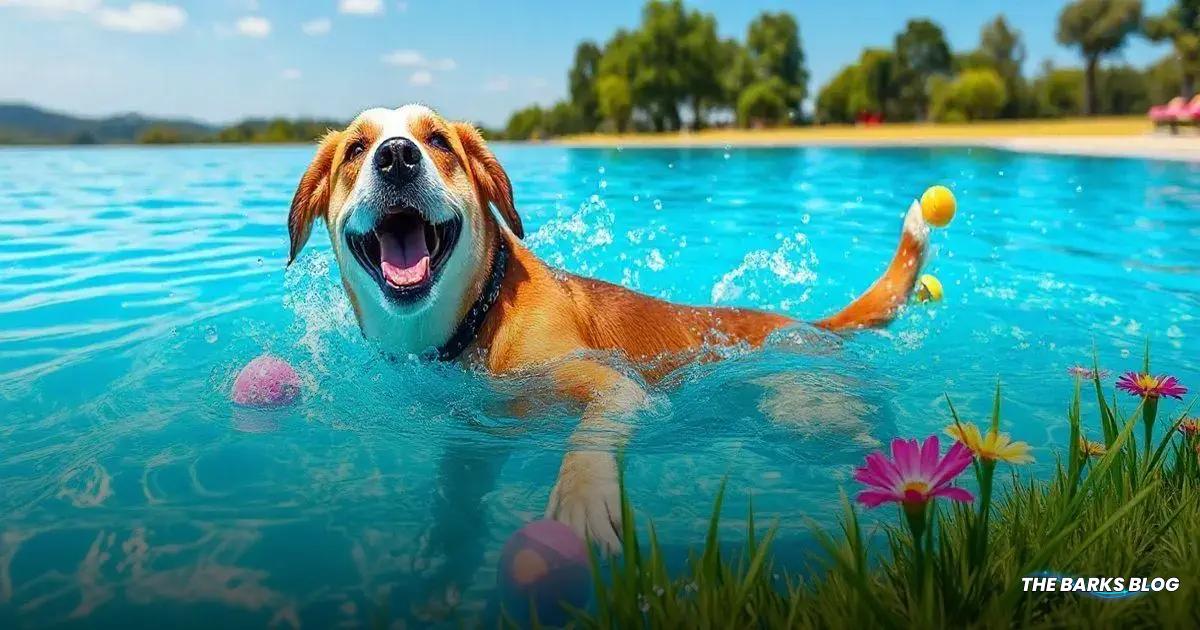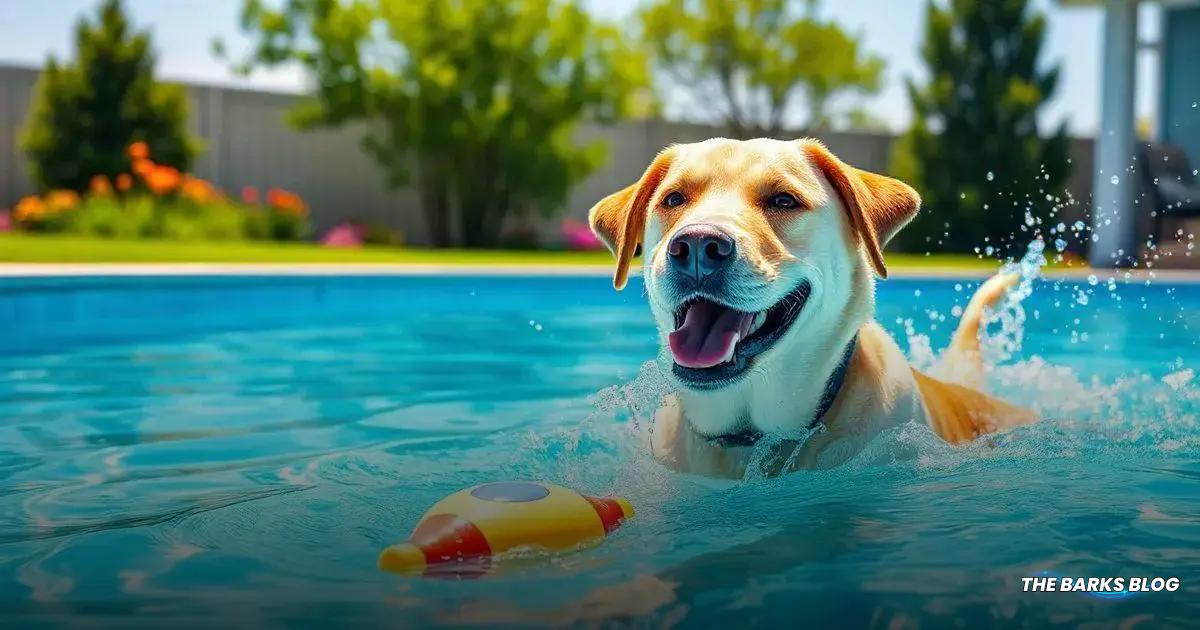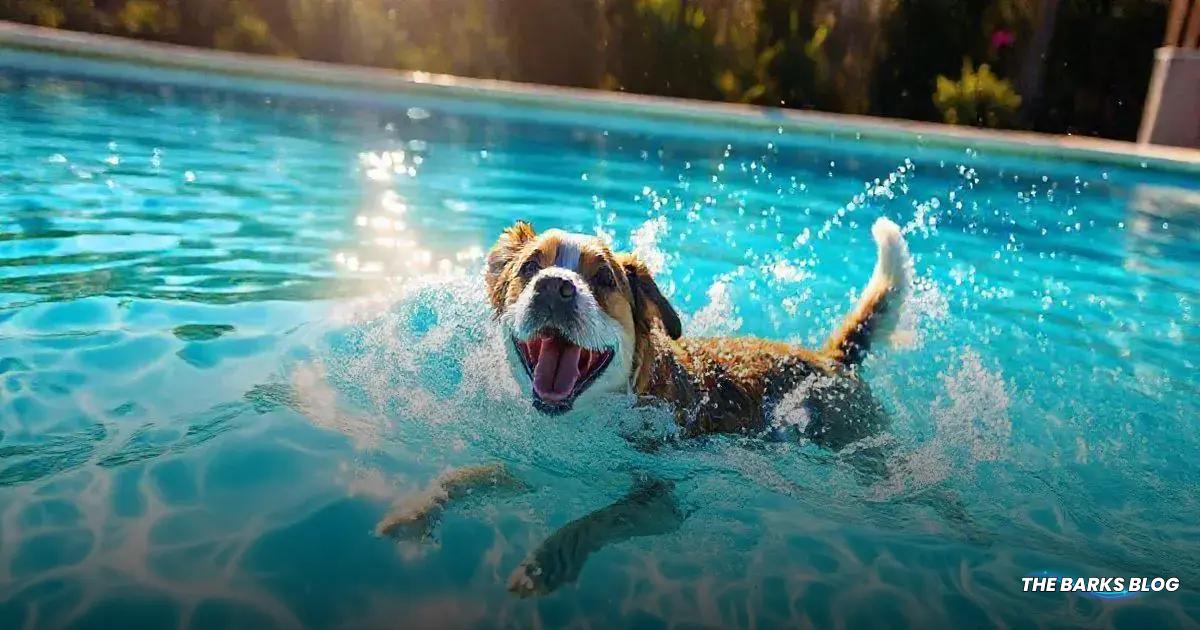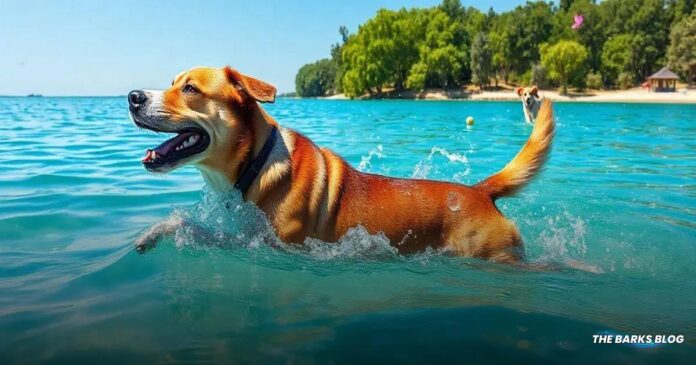Swimming is a great exercise for dogs, enhancing joint health, aiding in weight loss, and improving overall fitness while also providing mental stimulation. It’s crucial to assess your dog’s swimming abilities and comfort level, as not all breeds are natural swimmers. To teach your dog to swim safely, use a swim vest, create a positive environment, and gradually introduce them to the water. Dogs can swim in chlorine pools, but they should be rinsed afterward and given fresh water to drink. Following safety guidelines ensures a positive swimming experience for your dog.
Swimming for dogs is not just a fun activity; it brings numerous health benefits that every dog owner should know about.
From improving joint health to providing mental stimulation, swimming can be a fantastic exercise for your furry friend.

Can All Dogs Swim?
It’s a common misconception that all dogs can swim naturally. While some breeds seem to take to the water like ducks, others may be more hesitant or even fearful. For instance, breeds with short legs and long bodies, like the Dachshund, may find swimming challenging. Similarly, Bulldogs, with their unique weight distribution, often struggle to float and swim without assistance.
However, there are certain breeds that are known for their love of water. Labrador Retrievers, Nova Scotia Duck Tolling Retrievers, Newfoundlands, Irish Water Spaniels, German Shorthaired Pointers, and Portuguese Water Dogs are all breeds that typically enjoy swimming. Their physical characteristics make them well-suited for this activity, and you’ll often see them happily splashing around in lakes and pools.
So, while some dogs are natural swimmers, others may need a little encouragement and training to feel comfortable in the water. It’s essential to assess your dog’s comfort level and abilities before introducing them to swimming.

Benefits of Swimming for Dogs
Swimming offers a multitude of benefits for dogs, making it an excellent form of exercise for our furry friends.
Here are some key advantages:
It’s Joint Friendly
One of the most significant benefits of swimming is that it is a non-weight bearing exercise. This means there is little to no impact on your dog’s joints and tendons. It’s perfect for older dogs or those with joint conditions, as it helps improve their range of motion while minimizing discomfort.
Warm Water Swimming Can Be Pain Relieving
Swimming in warm water can enhance blood circulation and keep your dog’s muscles warm, which is particularly beneficial for pets recovering from injuries or suffering from joint issues. It can provide soothing relief and help reduce pain.
It’s Stress Relieving
Swimming is not just physical exercise; it also offers mental health benefits. The act of swimming helps burn off pent-up energy, making it a fun and stimulating activity for dogs. A good swim can lead to better sleep, allowing their bodies to repair and rejuvenate.
It Can Help Overweight Dogs Lose Weight
If your dog is overweight, traditional exercises like walking or running can be hard on their joints. Swimming allows them to burn calories and lose weight without putting extra strain on their bodies, making it an ideal workout.
It Improves Their Health Overall
Swimming is an excellent cardiovascular workout. It’s believed that just one minute of swimming can be equivalent to four minutes of running! This activity helps strengthen the lungs and heart, improves blood circulation, boosts metabolism, and reduces inflammation while building muscle tone. All of these factors contribute to a happy and healthy dog.

How to Teach Your Dog to Swim
Teaching your dog to swim can be a rewarding experience for both of you! Here are some steps to help your furry friend become a confident swimmer:
Start with a Dog Swim Vest
Before introducing your dog to water, it’s wise to equip them with a swim vest. This provides safety and buoyancy, especially if they are nervous about swimming. Choose a vest with a handle for easy lifting in case of emergencies.
Create a Positive Environment
Encourage your dog to enter the water by using treats or their favorite toys. Make the atmosphere fun and exciting, and always use a calm and encouraging tone. Praise them generously to build their confidence.
Choose the Right Location
Select a body of water that has a gradual slope. This allows your dog to enter and exit the water comfortably. If you’re not getting in the water yourself, ensure you stay close to the exit point so your dog knows where to go.
Introduce Water Gradually
When your dog is ready, encourage them to step into the water. Start with shallow water and gradually move deeper as they become more comfortable. Praise them for every step they take into the water.
Keep Sessions Short
Limit swimming lessons to about 10 minutes at a time. This prevents fatigue and keeps the experience enjoyable. After swimming, offer a snack to help absorb any excess water they might have ingested.
Monitor Their Comfort Level
Observe your dog’s behavior closely. If they seem panicked, stay calm and avoid forcing them into deeper water. If they prefer to stay on land, respect their feelings. Not all dogs are natural swimmers, and that’s perfectly okay!
By following these steps and being patient, your dog can learn to enjoy swimming and all the benefits that come with it!

Can Dogs Swim in Chlorine Pools?
Yes, dogs can swim in chlorine pools, but there are some important considerations to keep in mind to ensure their safety and health.
Rinse After Swimming
After your dog has enjoyed a dip in the pool, it’s a good idea to rinse them off with fresh water. This helps remove any chlorine residue from their coat and skin, which can prevent irritation.
Provide Freshwater
Make sure your dog has access to fresh water near the pool. Dogs might be tempted to drink pool water, which contains chlorine and can upset their stomach. Encourage them to drink from their water bowl instead.
Drying Off
After swimming, ensure you dry your dog thoroughly, paying special attention to areas like behind their ears and in the folds of their skin. Moisture in these areas can lead to infections if not dried properly.
Watch for Signs of Irritation
Keep an eye on your dog for any signs of skin irritation or discomfort after swimming in a chlorine pool. If you notice excessive scratching, redness, or any unusual behavior, consult your veterinarian.
Limit Swimming Time
To minimize exposure to chlorine, limit your dog’s swimming time in the pool. Frequent, short swims are better than long sessions, especially if your dog is sensitive to chemicals.
By following these guidelines, you can ensure that your dog enjoys swimming in chlorine pools safely and comfortably!
Conclusion
Swimming is not only a fun activity for dogs but also offers numerous health benefits, including joint relief, weight loss, and improved overall fitness.
By understanding your dog’s swimming abilities and following the right techniques to introduce them to water, you can help them enjoy this enriching experience.
Whether in a natural body of water or a chlorine pool, ensuring your dog’s safety and comfort is paramount.
With proper guidance and encouragement, your furry friend can become a confident swimmer, enjoying the many advantages that come with this fantastic form of exercise.
Frequently Asked Questions about Swimming for Dogs
Can all dogs swim naturally?
No, not all dogs can swim naturally. While some breeds are excellent swimmers, others may struggle due to their physical characteristics.
What are the benefits of swimming for dogs?
Swimming offers joint relief, helps overweight dogs lose weight, improves overall health, and provides mental stimulation.
How can I teach my dog to swim?
Start by using a dog swim vest, create a positive environment with treats and toys, and gradually introduce them to water.
Is it safe for dogs to swim in chlorine pools?
Yes, dogs can swim in chlorine pools, but it’s important to rinse them off afterward and ensure they have access to fresh water.
How long should I let my dog swim?
Limit swimming sessions to about 10 minutes to prevent fatigue and keep the experience enjoyable.
What should I do if my dog seems scared of water?
If your dog is scared of water, don’t force them in. Instead, create a positive and encouraging environment to help build their confidence.




